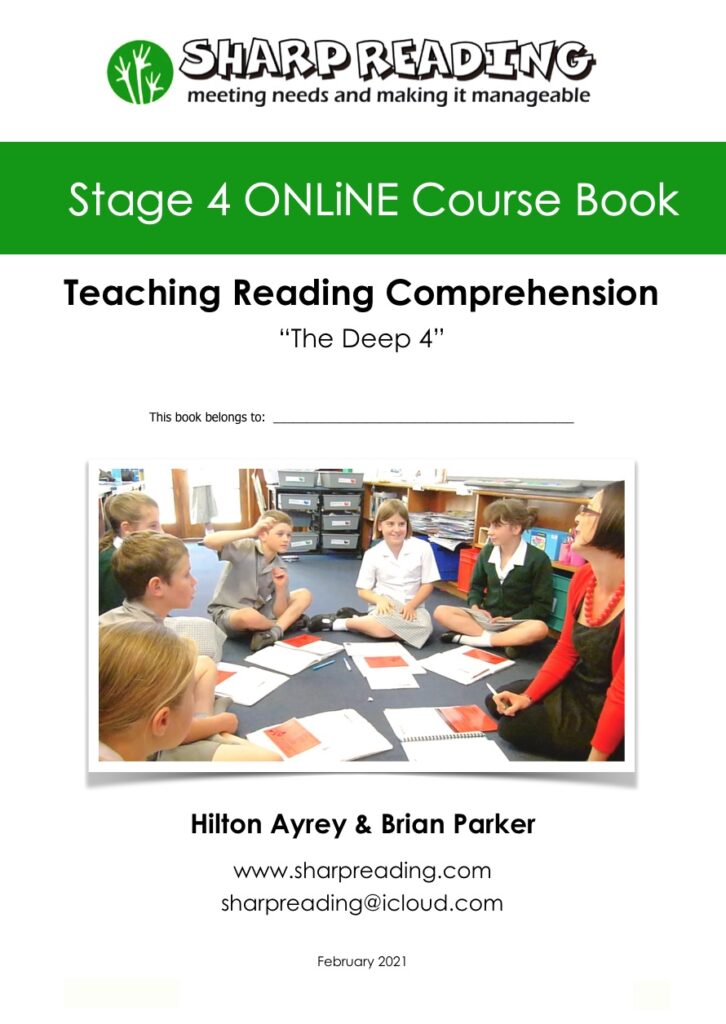Welcome to SharpReading Stage 4 ONLiNE Course
(Updated March 2024)
DOWNLOAD YOUR COURSE BOOK
 CLICK HERE
CLICK HERE
to download your Stage 4 Course Book (March 2024).
This includes all the teaching templates (Teacher Scripts, cover cards, Planning and Assessment) and texts for practice.
SETTING THE SCENE
When are students ready for Stage 4?
Before making a start on Stage 4, it is important that your students have developed a reasonable fluency with Stage 3 “I think that means…” (the ‘In-the-Moment’ skill of Unpacking Sentences) at a level of text difficulty that is appropriate to them.
I you are using SharpReading School-wide our Scope and Sequence suggests that Stage 4 can be introduced at Year 4 with students who have developed reasonable ITTM fluency with text at a RA 8-10 yr level.
Here are the fluency indicators you should be looking for
- They are quick and convincing with their ITTM statements
- They unpack all the pieces of information
- They stay with the sentence
- They identify the ‘who’ in the sentence
- They use gestures as shortcuts
- They acknowledge their own possible roadblocks during ITTM
- They have freed themselves from synonym substitution and word-by-word unpacking and are showing some ability to ‘tell the story’ in their ITTM statements.
- They can use the four sources of information and attempt to clear roadblocks during ITTM
– What clues are there in the sentence?
– What clues are there in the word?
– What sort of word is it?
– Where have I heard that word before?
That means that they can regularly generate a 3 but not necessarily every time, and it doesn’t have to be at the very top end of text complexity (RA 14+ yrs).
Stage 4 Theory
In Stage 3 we made a point of identifying how we could strengthen the intuitive language comprehension skills that students bring with them to the reading situation.
Our contention is that oral language comprehension has been developing since birth and students will have achieved different levels of mastery. Now that they have learnt to lift the words off the page (decode fluently – SharpReading Stages 1&2) they are now able to apply these language skills to written text.
Unpacking Sentences in Stage 3 was the vehicle we used to integrate those skills.
Other big-picture or text-level strategies that encourage critical thinking are introduced in Stages 5 and 6.
NEXT: UNIT 2 “I have a picture…” (Creating Mental Images, the first of the Deep 4).
